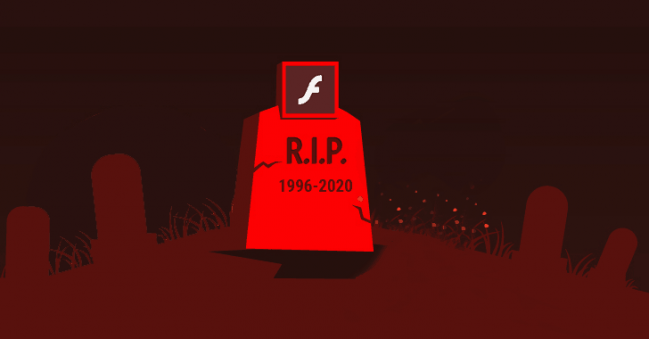


They will be able to create new process flows and/or edit existing process flows in subsequent Sage 300 v20 updates. After several subtle indications over the last few years that the end was near, Adobe itself has finally announced plans to cease its distribution.
Adobe flash end of life install#
In order to help customers with the best possible experience through this change, Sage will be introducing several new product updates in mid-December 2020 for Sage 300 v2019.4 so that the new Visual Process Flow feature no longer requires Adobe Flash Player.Ĭustomers that install the updates for Sage 300 v2019.4 will be able to view their custom visual process flows. Abandon their older Flash applications at the end of 2020? Make newer, snazzier sites to take advantage of online video and audio capabilities? The timeline seems overly generous, but after so many years, it’s finally true: Flash will fade away from the web.Sage 300 currently utilizes Adobe Flash Player for the Visual Process Flow feature and customers using this feature will be impacted by this change. However, the company will “move more aggressively to EOL Flash” in regions where there is a high number of unlicensed and outdated versions of Flash Player are in use.īecause websites will stop working once Flash enters end-of-life, there is an impetus for website owners to make specific adjustments before customers are no longer able to use the sites. For example, Facebook, which hosts lots of Flash games on its platform, wants developers to remember those deadlines to avoid compromising user experience. Even so, Adobe is not going to pull the plug on Flash right away, giving developers time to migrate their websites and fully embrace HTML5 and other open standards going forward. In security circles, Flash is unwelcome, even reviled. “Today, most browser vendors are integrating capabilities once provided by plugins directly into browsers and deprecating plugins,” Adobe said, acknowledging Flash was essentially obsolete. “We are encouraging content creators to migrate their existing Flash content to open formats like, HTML5.”
Adobe flash end of life archive#
It is very likely that we will also remove additional support pages (such as the Flash Player Archive and Debug download sites),” said an Adobe spokesperson. “Adobe will stop distribution of Flash Player from. Google will continue phasing out Flash, and will remove Flash entirely from the browser by the end of 2020.
Adobe flash end of life windows#
By mid-to-late 2019, Microsoft will disable Flash by default in Edge and Internet Explorer, and fully remove Flash from all supported versions of Windows by 2020. For example, Chrome and Microsoft Edge currently ask users to click-to-play Flash content by default. In independent announcements, Google, Mozilla, Apple and Microsoft outlined their plans for how their browsers will handle Flash over the next two-and-a-half years, with the ultimate goal of disabling Flash completely. Come December 31, 2020, websites with Flash content will stop working because all major web browsers will have disabled the capability to play those files. Even so, Flash seemed poised to stick around forever as some kind of a tech zombie-a number of gaming, educational and video applications continue to rely heavily on the technology-much the same way client-side Java applets and Windows XP just won’t die.īut this time, it looks real. In those cases, users must manually click to play Flash on websites. The tech press has been predicting the death of Flash for years-HTML5 was hailed as the Flash-killer, except it took the standard a while to mature to the point where it could compete head-on with Flash, Steve Jobs insisted iOS devices would never support it, and several major browsers have started not playing Flash content by default.


Adobe announced it will completely end support for Adobe Flash Player in 2020. Ding-dong, Flash is finally dead (well, will finally be dead in 2020).


 0 kommentar(er)
0 kommentar(er)
